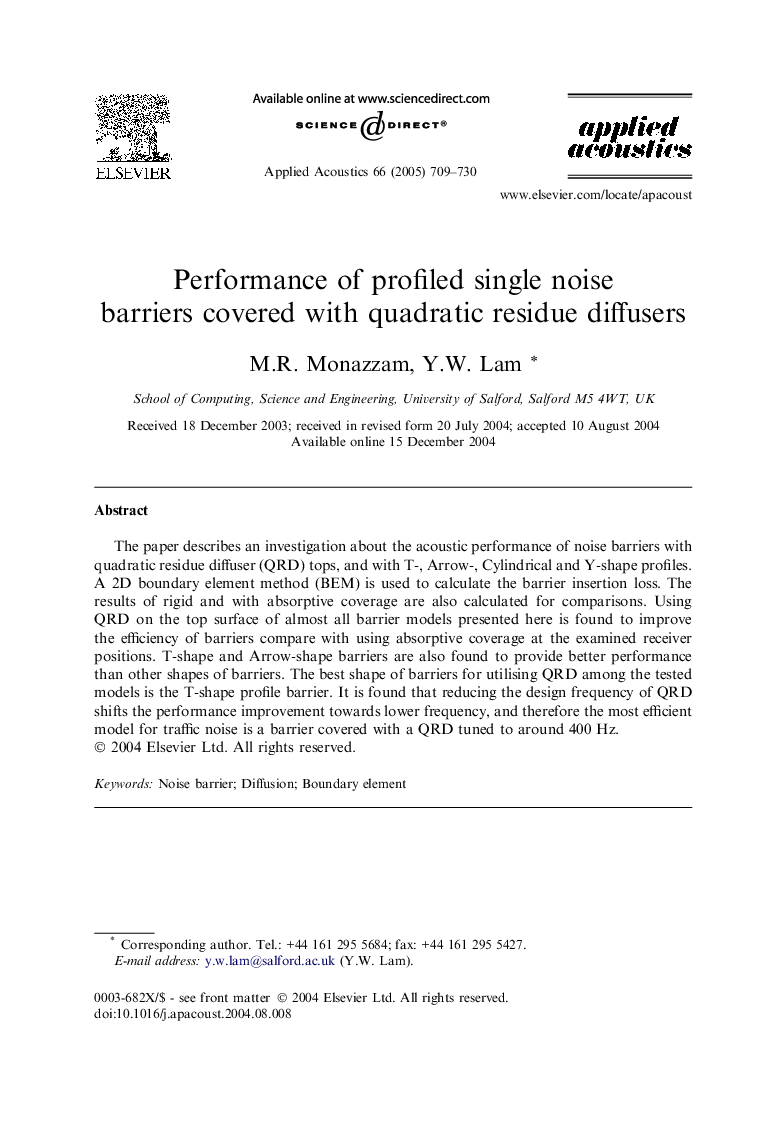| Article ID | Journal | Published Year | Pages | File Type |
|---|---|---|---|---|
| 10413714 | Applied Acoustics | 2005 | 22 Pages |
Abstract
The paper describes an investigation about the acoustic performance of noise barriers with quadratic residue diffuser (QRD) tops, and with T-, Arrow-, Cylindrical and Y-shape profiles. A 2D boundary element method (BEM) is used to calculate the barrier insertion loss. The results of rigid and with absorptive coverage are also calculated for comparisons. Using QRD on the top surface of almost all barrier models presented here is found to improve the efficiency of barriers compare with using absorptive coverage at the examined receiver positions. T-shape and Arrow-shape barriers are also found to provide better performance than other shapes of barriers. The best shape of barriers for utilising QRD among the tested models is the T-shape profile barrier. It is found that reducing the design frequency of QRD shifts the performance improvement towards lower frequency, and therefore the most efficient model for traffic noise is a barrier covered with a QRD tuned to around 400 Hz.
Related Topics
Physical Sciences and Engineering
Engineering
Mechanical Engineering
Authors
M.R. Monazzam, Y.W. Lam,
